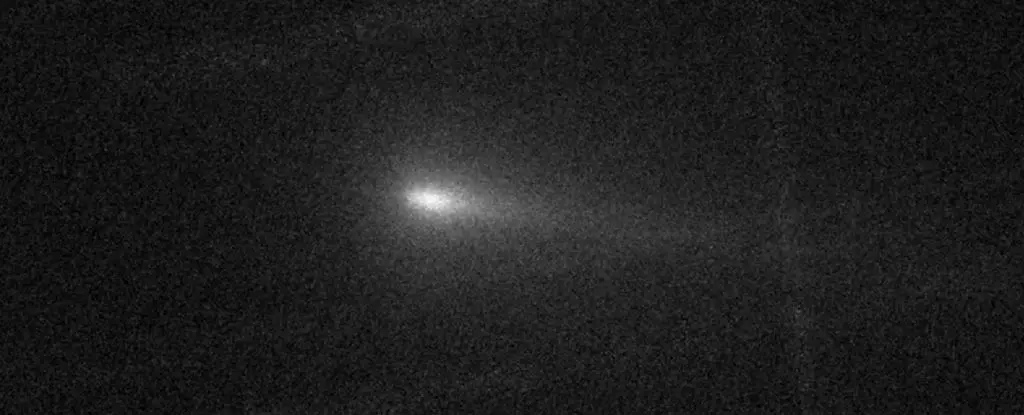The cosmos is often a source of wonderment and intrigue, yet it can also serve as a sobering reminder of the unpredictability of cosmic events. A prime example is the recent anticipated spectacle of the comet C/2024 S1, heralded as a potential astronomical delight for stargazers around Halloween. Regrettably, this comet appears to be meeting an untimely end as it disintegrates when approaching the Sun—a fate that both captivates and disappoints observers.
Discovered on September 27, C/2024 S1 is classified as a Kreutz sungrazer comet, a rare type that traverses an orbit dangerously close to the Sun. It was expected to pass within a mere 1.2 million kilometers (750,000 miles) of our star on October 28, 2024. Nevertheless, images captured throughout October reveal that, far from the spectacular display once anticipated, the comet is showing signs of instability and disintegration. Initial observations depicted sudden bursts of brightness caused by outburst activities, but these were soon followed by a notable dimming, with the comet’s nucleus appearing to veer from visibility entirely.
This deterioration leaves behind a trail of dust and gas, raising questions about what happens to a comet when it nears the ultimate heat of our solar system. C/2024 S1’s disintegration may seem disappointing, yet this event is not out of character for comets of its kind, which often succumb to stress from solar proximity.
Cometary disintegration is a fascinating phenomenon. C/2024 S1 is approximately comprised of ices and various volatile compounds, making it extraordinarily susceptible to thermal stress. As it nears the Sun, these ices begin to sublimate—turn into gas—and due to a swift release of gas and dust, the nucleus can spin rapidly, which may lead to its fracturing. This very process was on full display with Comet C/2019 Y4 in 2020, which fell apart as it approached the Sun, witnessed through the sophisticated instrumentation of the Hubble Space Telescope.
Recent observations posted to the Astronomer’s Telegram about C/2024 S1 highlight these disintegration signs, pointing to a significant alteration in the comet’s appearance. Astronomer Martin Mašek’s amateur photographs taken from Czechia showed that the nucleus had significantly dimmed and possibly vanished between October 20 and 22. The visual potential for C/2024 S1 was eye-catching, once considered to be brighter than Venus and possibly observable even in daylight. However, its fragmentation casts doubt on its ability to fulfill these expectations.
Historical Context of Comet Disintegration
Interestingly, C/2024 S1’s lineage connects it to a more remarkable historical comet, the Great Comet of 1106 CE. Experts believe that all Kreutz sungrazers, including C/2024 S1, are remnants of this great celestial event, which shattered into smaller fragments, creating a lineage of lesser comets. This makes the fate of C/2024 S1 both a continuation of cosmic history and a moment of cosmic failure.
Despite its current predicament, there remains a glimmer of hope: fragments from the nucleus, should they persist, may still enhance the comet’s display as it continues toward perihelion. Even if the primary nucleus does disintegrate, the comet’s tail, a mix of gas and debris, may still be visible for a fleeting time.
What Lies Ahead
As of now, those in the Southern Hemisphere may still catch glimpses of C/2024 S1 using binoculars or small telescopes. If it manages to survive perihelion, it could become observable in the Northern Hemisphere post-December. However, should the comet lose its nucleus entirely at its closest encounter with the Sun, viewers might instead see a dim tail curving against the backdrop of the void—a faint reminder of what was once a marvelous celestial event.
The phenomenon of C/2024 S1 is an epitome of the complexity and unpredictability of comets. As stargazers, we are reminded of the transient nature of astronomical wonders, underscoring the thrill and disappointment that the universe can deliver. With patience and keen observation, perhaps amidst the fragments and fading trails, we may still uncover a story worth sharing, even if that story is one of celestial loss. Happy hunting awaits those who dare to glance skyward!



Leave a Reply